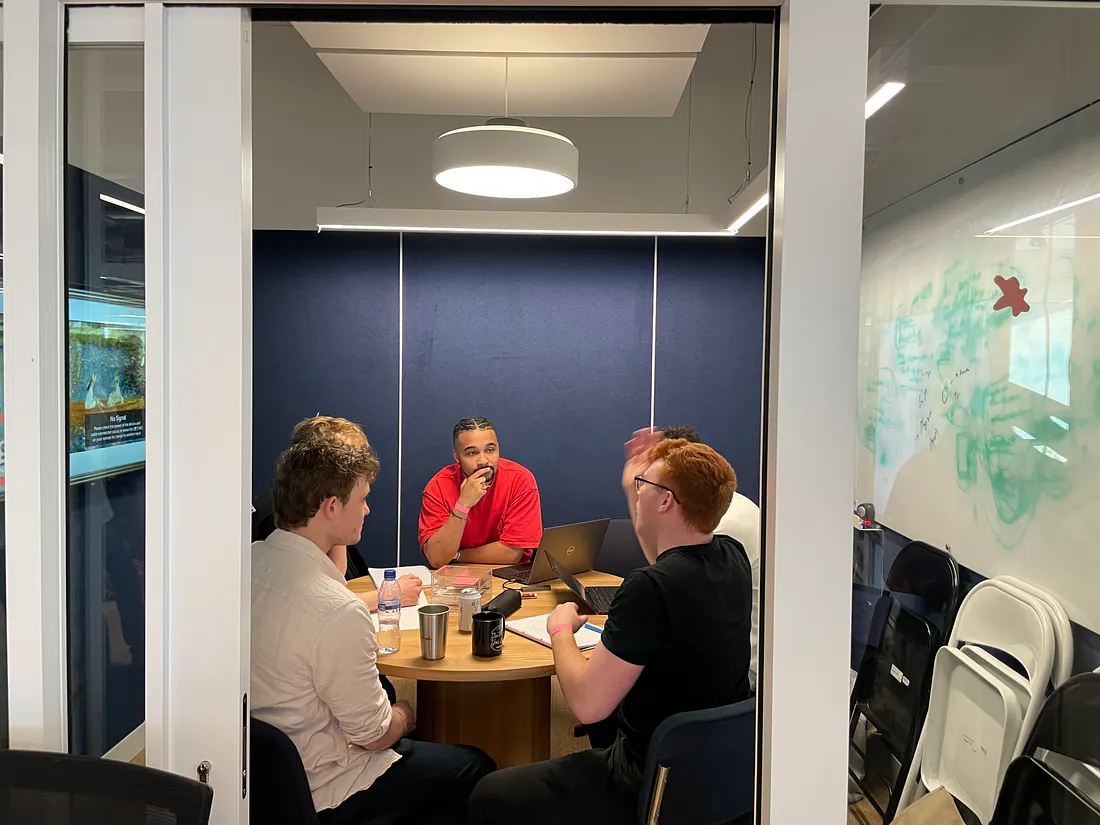After years in the startup scene wilderness, the hackathon is back and rebooted for the AI era.
From Zurich to Stockholm, London to Paris, this year has seen an increasing number of weekends where builders are getting together to hang, hack and bring their ideas to life fast. Why?
Faster and friendlier than ever
The obvious reason is that there is a whole new suite of AI native tools that fundamentally reshape how products can be built. Sure, you can learn at home but hackathons allow you to play with new products and frameworks, test out working in new teams (or bring an existing one) and build something you can discard at the end or choose to keep working on. They’re an easy way to make new friends and maybe even meet a future cofounder. If you’re a young hacker who was in high school during Covid, or anyone used to remote working, that’s critical.
If you can persuade someone to lend you a space with enough plugs, set a theme and get the word out, they’re also easy to run — and fun, for both organisers and participants.
But beyond fun, hackathons combat an increasingly noisy online environment.
As the race for technical and design talent heats up, organisers and participants can beat the rise in AI slop CVs by seeing how creative and effective someone is in a real world environment
Getting close to the talent
For founders launching or scaling tools, running or sponsoring an event like this can be a simple and cost-effective way to onboard many users at once and gather real-time feedback.
And the format levels the playing field for both ideas and talent. As the race for technical and design talent heats up, both organisers and participants can beat the rise in AI slop CVs by seeing how creative and effective someone is in a real world environment with compressed timelines. A Common Magic portfolio CTO took part in a relevant hackathon determined to talent-spot and came home with a strong candidate who has now settled in well as a founding engineer hire.
Even VCs are getting in on hackathons with multiple funds hosting, sponsoring and mentoring. As first rounds become more competitive, I can’t be the only pre-seed investor that has met incredible builders for the first time at hackathons and later invested. Building real relationships trumps cold inbound any day.

This time, for everyone
And, since the last wave, hackathons in 2025 have had a makeover.
The traditional format was a whole weekend where the brief or theme would be shared Friday night. Teams form, then hack through Saturday, before demos and pitches on Sunday night.
Great — but a big time commitment for organisers and participants, especially if you have an intense day job and/or small children.
The sheer speed of new tools where prototypes can be spun up in minutes has shortened the hackathon from a whole weekend to a day and even, in the case of the hacknight, an evening session. Easier to commit to and simpler to organise.
In the old days, the classic hackathon weekend meant pizza, beer and a few nights sleeping face down on your desk in a zipped up hoodie. But we know more about the importance of health these days. I’ve been to or run hackathons with massage chairs, vegetarian empanadas and stretch breaks. Project Europe even had ice baths installed for their recent hackathon with Lovable.
Speaking of Lovable, the rise of the less technical vibe coder means the attendee group can be brilliantly broad. Alongside classic sponsors like OpenAI, AWS and Google DeepMind, a GenAI hackathon I ran also had sponsorship from the British Medical Journal which allowed us to use anonymised medical data and helped us welcome doctors, nurses and hackers interested in building smart solutions for the health system. The theme, sponsors and selected mentors and judges really guides the participants who apply and there’s room for many more kinds of hackathons than even what we see now.
Europe has incredible builder talent, a maturing early-stage capital scene, regulation that’s improving and many industries ripe for disruption or expansion. Density is what we need more of; the proximity we all have to those that have built brilliant things before or want to do it next. Peers that will push our ambition levels.
When I lived in San Francisco, you couldn’t get a coffee without bumping into someone great; a mix of the city’s small scale, the dominance of the tech industry and the volume of events meant you could easily access local heroes, build your network fast and learn about new things. Hackathons help us build stronger scenes locally.
And not just locally but globally. At a recent Granola and Vercel hackathon I judged, one of the winning teams flew in from Edinburgh; given how close many European capitals are and that some events, like this, are worth travelling for, these moments are also how we improve pan-European connection.
A few hours of building may seem small, but dig deep and hackathons can play a big role in fuelling the next wave of great founders and builders.
Want to run your own? Here’s a short practical guide covering the essentials.
Read the orginal article: https://sifted.eu/articles/why-hackathons-are-so-back/


